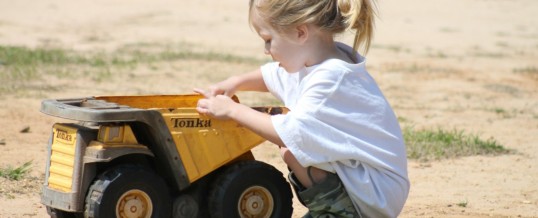
Asserting oneself begins at birth. We parents quickly learn the differences between the loud, insistent screams our babies make. We know when our one month old is saying, “I’m hungry, NOW” or “Something really hurts!”
Asserting oneself becomes all too evident during the toddler years when “Me do” and “No”, provokes nods from adults and we mutter knowingly, “ the terrible twos”. This strong push toward independence, although it tries our patience, is generally understood to be a predictable part of growing up and we look forward to the next stage when the child insists on independence in more subtle ways.
But what about a child like 4-year-old Sarah who is so “nice” and easily gives? She lets another child grab the doll carriage she is playing with and take off with it and doesn’t yell “No”, “Mine”, or run to get the help of an adult. What about the four- year-old who returns, uncomplaining, to building his castle after his two friends steal some of his blocks to build their own castle?
How Do We Feel?
We parents are often grateful for children who aren’t always raising a rumpus about their rights. We assess and label them as “easy going” and “nice”. There are times when it nags us a little that our four year old always gives in but a play date free of fights is what we value in this hectic, over-scheduled world. One adult watching the group of kids that included Sarah suggested she was simply the early version of the adult who doesn’t get “hyper” about little things and decides most things aren’t worth the hassle or fuss-up.
Where is the child headed?
This behavior raises a red flag. What was really happening and how was Sarah feeling as she watched her carriage disappear? First of all, given her age, assuming she could make on-the-spot decisions about what things are important to pursue and what might not be worth the emotional expenditure is unrealistic. At age four, children are unable to think this way. That doll carriage was an important part of her play. She had chosen it and had a plan in mind as she pushed her doll in it. Her imagination was at work and she might well have been imitating what her Mommy does with the new baby. Just because she’s four and only “playing” does not mean the things she chooses to do are not terribly important to her. This play is the model for how she will one day treat her daughter or manage her business. Will she continue to give in and be so “nice” at 10 years of age when a friend urges her to be unkind to another friend or at fifteen when she’s offered drugs?
Cause
What is a good way to think about this interaction between two four year olds? We have decided Sarah’s play was important to her and so should ask ourselves why she didn’t stand up for herself. Why didn’t she object to her carriage being grabbed? Was the other child a frightening peer who always became aggressive when he didn’t get his way? Had she perhaps received strong messages from adults that nice girls share and keep unhappy feelings to themselves? Perhaps she felt very small and her feelings of inadequacy were powerful. They were so powerful that she was incapable of finding the strength to hold on to the carriage and say, “No.”
What to Understand?
We can begin by understanding that standing up for oneself is important but complicated. We can begin to be more aware of the times our children don’t assert themselves when it would be logical to do so and try to understand how they are feeling. We can observe our child who is so likeable and eager to please but quietly reluctant to assert herself. When everyone likes a child and they are no trouble, it’s easier to let it go or to interpret the behavior as the observer did, as deliberately choosing her fights.
What To Do?
How should we parents use this example as we nurture and raise our children? After all, sharing the things we have is a valued characteristic and one we praise among our children and their friends. If we see our three or four year old continually relinquishing a toy to another child we should observe thoughtfully and notice behaviors and expressions. Did she really want to share her carriage or did she hesitate, look uncertain and then move on to something else? Some children are frightened at the prospect of showing displeasure or anger so it’s important for parents to remain calm, be supportive and reassure our children that it’s all right to be angry particularly when something has been taken away from them that they were playing with. We must mean what we say. We can also help by giving our children the words to use even when their vocabularies are limited, such as “No!” or “I am playing with that!”
Understanding the importance of children’s play and taking seriously a child’s investment in a particular activity or toy is a first step in helping a child who has feelings of inadequacy or is afraid to stand up for herself. Right now, at four years of age, Sarah is worried about the loss of her doll carriage and her inability to hold on to this toy. She does not know how to make things right for herself and is afraid to try. Knowing this, we can gently move in beside her and help.
JAN
2020


About the Author: